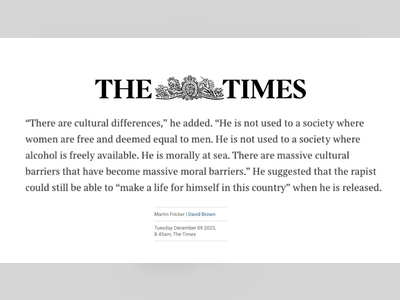
COVID-19 Cases Are Rising, So Why Are Deaths Flatlining?
For the past few weeks, I have been obsessed with a mystery emerging in the national COVID-19 data.
Cases have soared to terrifying levels since June. Yesterday, the U.S. had 62,000 confirmed cases, an all-time high—and about five times more than the entire continent of Europe. Several U.S. states, including Arizona and Florida, currently have more confirmed cases per capita than any other country in the world.
But average daily deaths are down 75 percent from their April peak. Despite higher death counts on Tuesday and Wednesday, the weekly average has largely plateaued in the past two weeks.
The gap between spiking cases and falling-then-flatlining deaths has become the latest partisan flashpoint. President Donald Trump has brushed off the coronavirus surge by emphasizing the lower death rate, saying that “99 percent of [COVID-19 cases] are totally harmless.” On Tuesday, Anthony Fauci, the director of the National Institute of Allergy and Infectious Diseases, warned Americans against “[taking] comfort in the lower rate of death” just hours before Trump tweeted triumphantly: “Death Rate from Coronavirus is down tenfold!”
In the fog of pandemic, every statistic tells a story, but no one statistic tells the whole truth. Conservatives seeking refuge in today’s death counts may find, in a matter of days, that deaths are clearly resurging and their narrative is rapidly deteriorating. But liberals, too, should avoid the temptation to flatly reject any remotely positive finding, for fear that it will give succor to the president.
What follows are five possible explanations for the case-death gap. Take them as complementary, rather than competing, theories.
1. Deaths lag cases—and that might explain almost everything.
You can’t have a serious discussion about case and death numbers without noting that people die of diseases after they get sick. It follows that there should be a lag between a surge in cases and a surge in deaths. More subtly, there can also be a lag between the date a person dies and the date the death certificate is issued, and another lag before that death is reported to the state and the federal government. As this chart from the COVID Tracking Project shows, the official reporting of a COVID-19 death can lag COVID-19 exposure by up to a month. This suggests that the surge in deaths is coming.
In Arizona, Florida, and Texas, the death surge is already happening. Since June 7, the seven-day average of deaths in those hot-spot states has increased 69 percent, according to the COVID Tracking Project.
The death lag is probably the most important thing to understand in evaluating the case-death gap. But it doesn’t explain everything. Even where deaths are rising, corresponding cases are rising notably faster.
2. Expanded testing is finding more cases, milder cases, and earlier cases.
There is a bad way to talk about testing, and a nuanced way to talk about it.
The simplistic version, which we often hear from the president, is that cases are surging only because the number of tests is rising. That’s just wrong. Since the beginning of June, the share of COVID-19 tests that have come back positive has increased from 4.5 percent to 8 percent. Hospitalizations are skyrocketing across the South and West. Those are clear signs of an underlying outbreak.
Something subtler is happening. The huge increase in testing is an unalloyed good, but it might be tricking us with some confusing weeks of data.
In March and April, tests were scarce, and medical providers had to ration tests for the sickest patients. Now that testing has expanded into communities across the U.S., the results might be picking up milder, or even asymptomatic, cases of COVID-19.
The whole point of testing is to find cases, trace the patients’ close contacts, and isolate the sick. But our superior testing capacity makes it difficult to do apples-to-apples comparisons with the initial surge; it’s like trying to compare the height of two mountains when one of the peaks is obscured by clouds. The epidemiologist Ellie Murray has also cautioned that identifying new fatal cases of COVID-19 earlier in the victims’ disease process could mean a longer lag between detection and death. This phenomenon, known as “lead time bias,” might be telling us that a big death surge is coming.
And maybe it is. Maybe this is all as simple as nationwide deaths are about to soar, again.
But there are still three reasons to think that any forthcoming death surge could be materially different from the one that brutalized the Northeast in March and April: younger patients, better hospital outcomes, and summer effects.
3. The typical COVID-19 patient is getting younger.
The most important COVID-19 story right now may be the age shift.
In Florida, the median age of new COVID-19 cases fell from 65 in March to 35 in June. In its latest daily report, the Florida Department of Health says the median age is still in the high 30s.* In Arizona, Texas, and California, young adults getting sick have been driving the surge.
If the latest surge is concentrated among younger Americans, that would partly explain the declining death count. Young people are much less likely to die from this disease, even if they face other health risks. International data from South Korea, Spain, China, and Italy suggest that the COVID-19 case-fatality rate for people older than 70 is more than 100 times greater than for those younger than 40.
The youth shift seems very real, but what’s behind it is harder to say. Maybe older Americans are being more cautious about avoiding crowded indoor spaces. Maybe news reports of young people packing themselves into bars explain the youth spike, since indoor bars are exquisitely designed to spread the virus. Or maybe state and local governments that rushed to reopen the economy pushed young people into work environments that got them sick. “The people in the service economy and the retail industry, they tend to be young, and they can’t work remotely,” says Natalie Dean, an assistant professor at the University of Florida. Texas Governor Greg Abbott blamed reckless young people for driving the spike, but the true locus of recklessness might be the governor’s mansion.
No matter the cause, interpreting the “youth surge” as good news would be a mistake. Young people infected with COVID-19 still face extreme dangers—and present real danger to their close contacts and their community. “We see people in their 20s and 30s in our ICUs gasping for air because they have COVID-19,” James McDeavitt, the dean of clinical affairs at Baylor College of Medicine, told The Wall Street Journal. Young people who feel fine can still contract long-term organ damage, particularly to their lungs. They can pass the disease to more vulnerable people, who end up in the hospital; a youth surge could easily translate into a broader uptick some weeks from now. And the sheer breadth of the youth surge could force businesses to shut down, throwing millions more people into limbo or outright unemployment.
4. Hospitalized patients are dying less frequently, even without a home-run treatment.
So far, we’ve focused on the gap between cases and deaths. But there’s another gap that deserves our attention. Hospitalizations and deaths moved up and down in tandem before June. After June, they’ve diverged. National hospitalizations are rising, but deaths aren’t.
The hospitalization and death data that we have aren’t good enough or timely enough to say anything definitive. But the chart suggests some good news (finally): Patients at hospitals are dying less.
Indeed, other countries have seen the same. One study from a hospital in Milan found that from March to May, the mortality rate of its COVID-19 patients declined from 24 percent to 2 percent—"without significant changes in patients’ age.” British hospitals found that their hospital mortality rate has declined every month since April.
So what’s going on? Maybe doctors are just getting smarter about the disease.
In early 2020, the novelty of the coronavirus meant that doctors had no idea what to expect. Health-care professionals were initially shocked that what they assumed to be a respiratory disease was causing blood clots, microvascular thrombosis, and organ damage. But millions of cases and hundreds of white papers later, we know more. That’s how, for example, doctors know to prescribe the steroid dexamethasone to rein in out-of-control immune responses that destroy patients’ organs.
Finally, it’s notable that mortality declined in Italian and British hospitals when they weren't overrun with patients. This is another reason why flattening the curve isn't just a buzzy slogan, but a matter of life and death. As hospitals across Texas and Arizona start to fill up, we’ll see whether hospital mortality increases again.
5. Summer might be helping—but probably only a little bit.
Several remaining theories about the case-death gap are more speculative, mostly falling under the category of “summer is just different.”
The transition to summer may have stamped out other illnesses that were weakening our immune systems. People in the Northern Hemisphere may absorb more Vitamin D in the summer, which might mitigate COVID-19 mortality. The virus might have mutated to become more contagious, but not more deadly, which might—in combination with other factors, like superior hospital treatment of the disease—exacerbate an outbreak in cases that doesn’t correspond with an increase in deaths.
Finally, as more people wear masks and move their activities outside in the summer, they might come into contact with smaller infecting doses of COVID-19. Some epidemiologists have claimed that there is a relationship between viral load and severity. With more masks and more outdoor interactions, it’s possible that the recent surge is partly buoyed by an increase in these low-dosage cases.
The case-death gap remains a bonfire of unknowns. And, as we’ve seen, uncertainty is a cavity where propaganda can breed. So let’s conclude with what we know for sure: The surge in cases represents a vast and tragic American failure—even if it doesn’t lead to a correspondingly dramatic spike in deaths.
This virus is a cryptic devil. It can brutalize people’s bodies for weeks or months, even if it doesn’t kill them. It can savage the lungs of young people, even when it doesn’t produce other symptoms. Those who are infected can transmit it to more vulnerable people. Those who contract severe cases can be sent to the hospital for weeks and live for months—which may turn into years—with aftershocks from the illness. Outbreaks might make school openings implausible, sports improbable, and ordinary life impossible.
When President Trump and others point exclusively to lagging death figures during a surge, they are trying to tell you that America is, secretly, winning the war on COVID-19. But we’re not. The summer surge is an exceptionally American failure, born of absent leadership and terrible public-health communication.
After all the graphs, statistics, science, and interpretations, we’re left with a simple fact: Hundreds of Americans are dying every day of a disease that is infecting several hundred thousand of them every week. If that’s success, let’s pray we never see failure.











